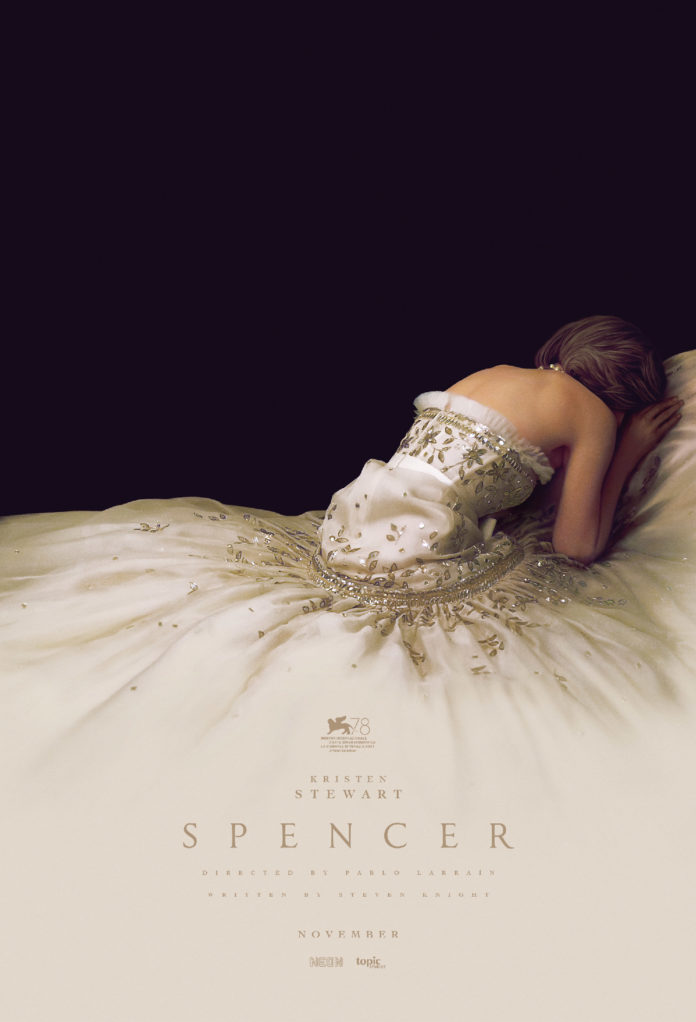Traditions are meant to be broken. When the news broke online last year that Kristen Stewart would be playing Princess Diana, it was met with heavy criticism based solely on her past filmography. Now, with the release of the film, she is a frontrunner for Best Actress Oscar in a highly contested awards season.
Stewart does the unthinkable in “Spencer,” which takes place over three sequential yet dreadful days—Christmas Eve, Christmas Day and Boxing Day—in 1991. Screenwriter Steven Knight describes the film as being a condensed retelling, “like a paparazzi shot,” of Diana’s life that dives deep into the Princess’ psyche. It’s not your traditional biopic, and the film does a fascinating job of depicting Diana in her darkest moments: while her marriage with Charles has grown cold, she still must remain present in front of the cameras that watch her every move.
Diana attempts to keep this agony hidden from her two young children and be a positive role model during the holiday season. She battles internally and attempts to reclaim her true self, hence the title of the film being her maiden name. This all comes during a time of tight control by the Royal Family, who places constraints on her every action that could be caught in the public’s eye.
This is where Stewart shines. Her performance is almost a cathartic awakening of an artist who has been hidden behind the thought that her talents are limited solely to being the star of the “Twilight” films. Just like Diana, this is her moment for others to realize her true potential that has been hidden by the public’s perception of her. When it comes time for Stewart to collect her much-deserved Oscar early next year, it will be a huge accomplishment not only for her performance in “Spencer,” but also for her perseverance to break free from her past.
Following his look into the tragic life of Jackie Kennedy in 2016’s “Jackie,” director Pablo Larraín continues his explore famous women’s lives and conduct an expose on their thoughts during their most grueling moments. His direction presents such an intimate look into the life of the Diana that we understand every single action she takes and feel every emotion, just as she does.
This direction is complimented by the superb cinematography, which makes every shot feel as though it is a classic painting. With the use of so many closeups, cinematographer Claire Mathon emulates typical stylistic choices that are common in the horror genre. One could almost compare the shots of Diana roaming the halls of Sandringham House to Jack Torrance running through the Overlook Hotel in “The Shining.” It’s an interesting choice that fits perfectly with the story being told.
In the background is Jonny Greenwood’s haunting score. A combination of violins, organs and piano that beautifully illustrates every scene in the film. His score plays as though it is a character in the film; always present, lurking in the shadows and waiting to strike. Just like his 2017 score for Paul Thomas Anderson’s “Phantom Thread,” Greenwood’s score is one of the most crucial pieces to the film.
All these elements blend so perfectly together that it is hard to find a fault in the film. It’s a touching tribute to the “People’s Princess” and everything she had to offer to the world. For a subject whose life was cut far too short due to tragedy, “Spencer” offers a tale that gives Diana purpose. No longer is her life controlled by her husband, the Royal Family or the media. Instead, she sits in driver’s seat and begins her new life of freedom, a life where she takes the reign of her narrative for the very first time.








